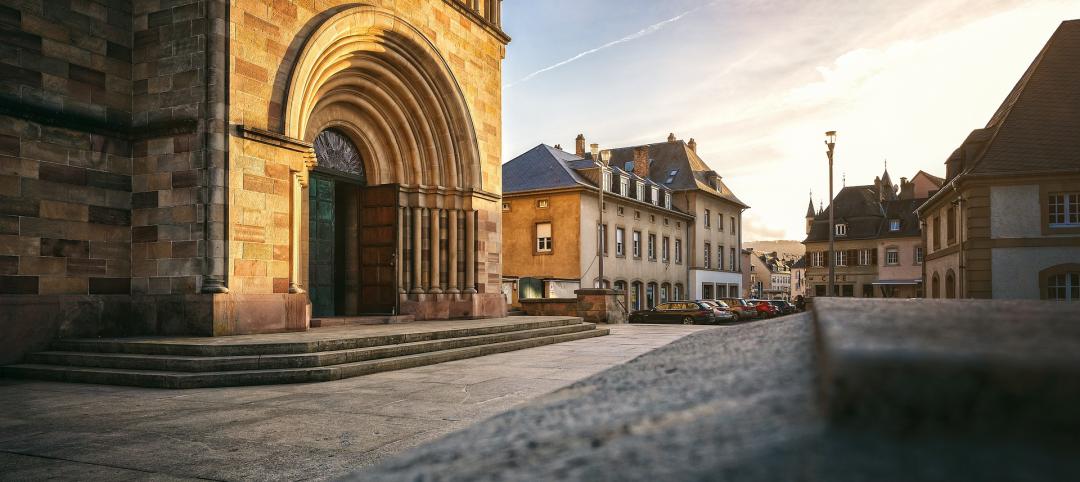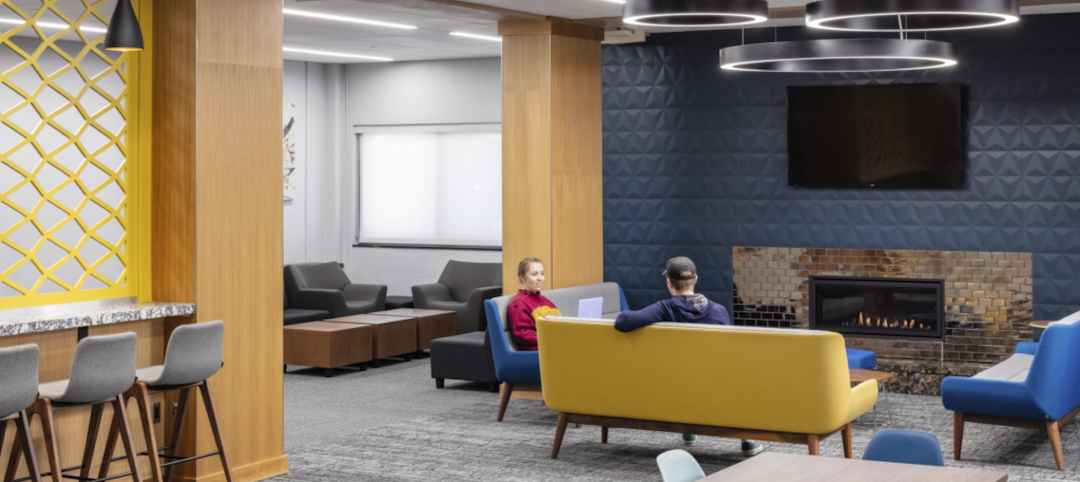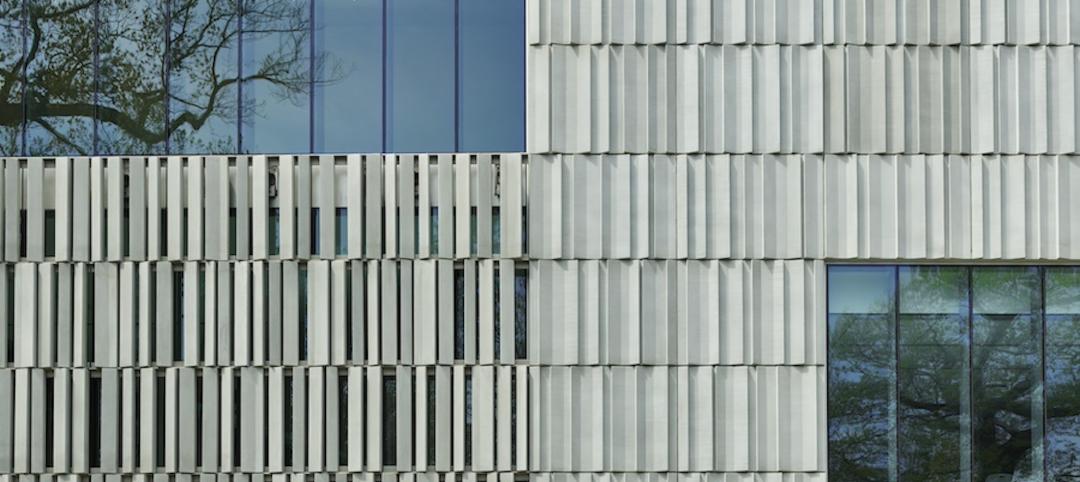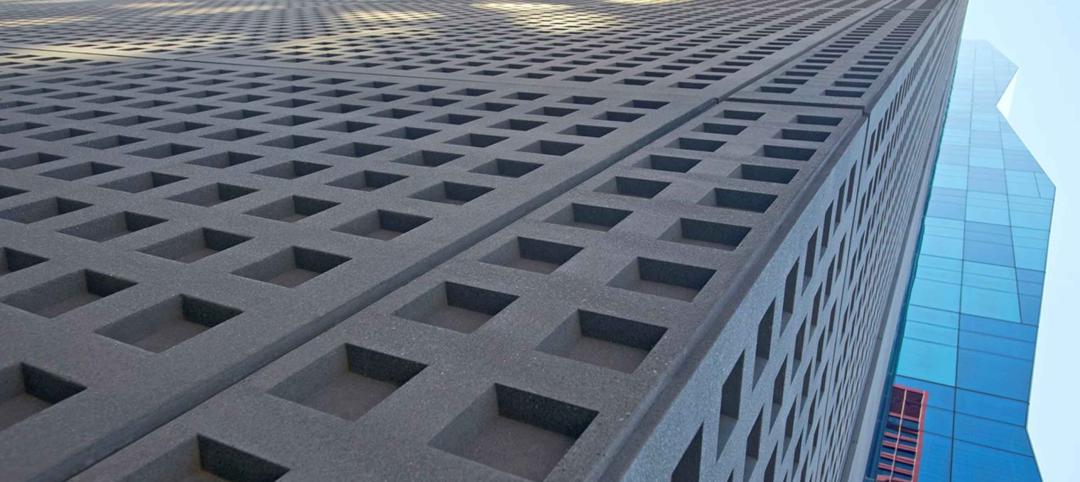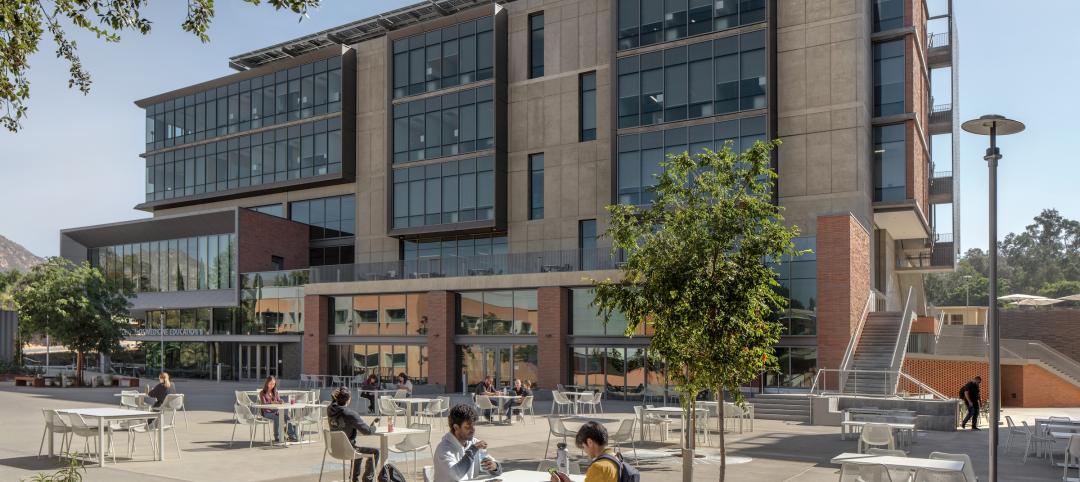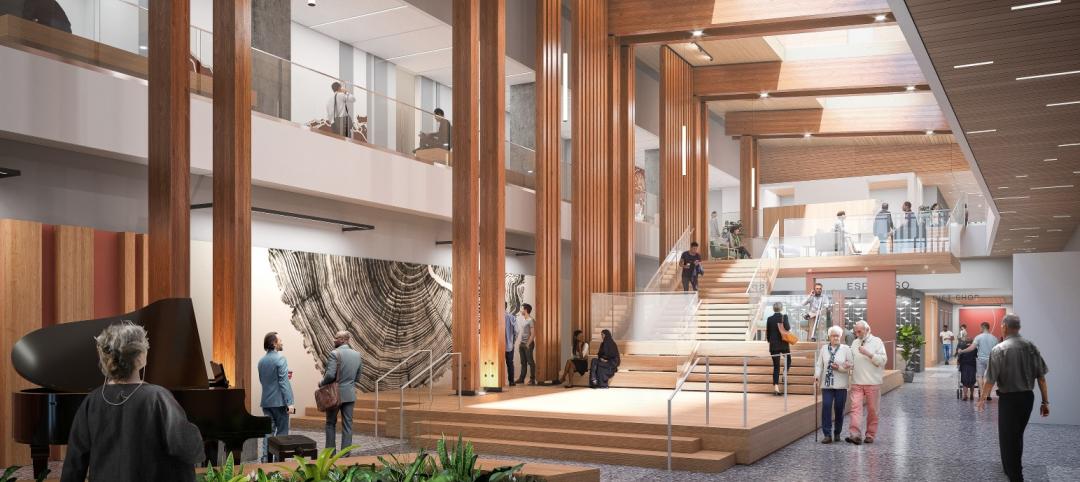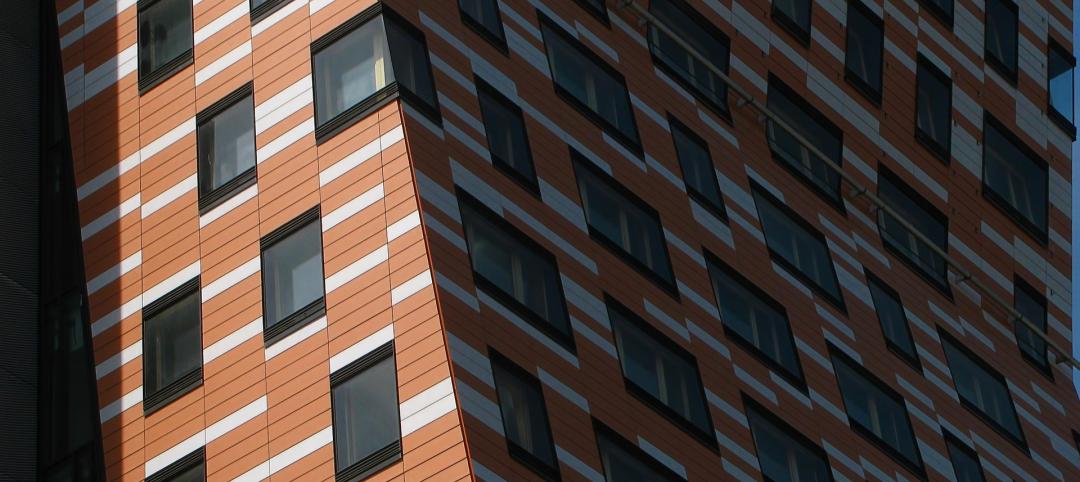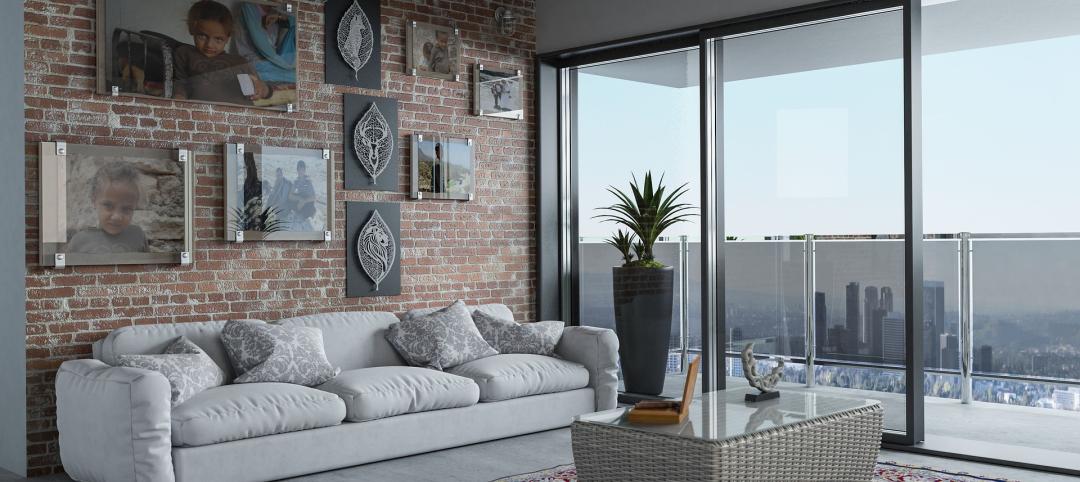7. San Antonio Military Medical Center an addition to the Brooke Army Medical Center; Fort Sam Houston, Texas
RTKL Associates, Inc.
The San Antonio Military Medical Center (SAMMC) is the largest inpatient medical center for the U.S. Department of Defense and the agency’s only American Burn Associated-verified burn center. The building, which opened in 2011, adds 102 beds, a rehabilitation clinic, expanded operating room capabilities, a new emergency department and a new patient bed tower. It also includes a parking structure for 5,000 vehicles, and ancillary support and infrastructure. RTKL was commissioned to design the new 760,000 -square-foot, LEED Silver certified building after working on a number of other projects for the U.S. Army Corps of Engineers in support of their 2005 Base Realignment and Closure (BRAC) initiative. Photos: Charles Davis Smith courtesy RTKL
Category C: Unbuilt
8. Sheikh Khalifa Medical City; Abu Dhabi, UAE
Skidmore, Owings & Merrill in a joint venture with ICME & Tilke as ITS
Sheikh Khalifa Medical City (SKMC) is an 838-bed medical complex in the heart of Abu Dhabi. Designed by Skidmore, Owings & Merrill LLP (SOM) in a joint venture with ICME and Tilke, SKMC contains three hospitals under one roof, combining a General Hospital, tertiary Women’s Hospital, and Pediatric Hospital. This model enhances patient care through specialization while improving efficiency through shared services. Envisioned as a city within a city, the design creates a bustling campus-like environment of distinct character and is based on the notion of patients as guests. The project’s lobbies and public spaces convey a sense of serenity through spaciousness, natural materials and diffused natural light. Renderings: SOM
Category D: Innovations in Planning and Design Research, Built and Unbuilt
9. Brigham and Women's Hospital, Advanced Multimodality Image Guided Operating Room (AMIGO); Boston
Payette
In the groundbreaking clinical research facility, Brigham and Women’s Hospital’s AMIGO Suite, an operating room is linked to adjacent imaging suites, enabling the patient to remain static while the machines—including a 33,000-pound MRI—move from one chamber to another in the midst of a surgical procedure. The array of infrastructure necessary to enable this technology was deftly concealed behind walls and above ceilings, which were kept neutral in appearance so as not to compete with critical patient information displays. The kinetic qualities of the suite are captured on the floor, where the arc of the operating table’s rotation and the limits of the magnet’s Gaussian surfaces are vividly rendered in a palette of colors derived from the facility’s cutting-edge equipment. Photos: Warren Jagger Photography
10. Rethinking the need for emergency department beds
Lennon Associates
The project was to reduce the number of beds, staff and patient waiting times in a major teaching hospital emergency department while at the same time, increase patient safety and comfort. This study concluded that 60% of emergency department patients did not need to be in a bed, but could be seen in a less intense setting. Building less beds, needs less staff and requires a new physical layout to accommodate the new patient flow. That gave rise to new possibilities of enhanced patient spaces with amenities resembling that of airline first class accommodations. Computer simulations were liberally used to establish the size and staffing required for the new patient flow model. That was further buttressed by physical trials using actual patients. Renderings: Lennon Associates
11. Kaleida Health, Gates Vascular Institute and UB Clinical Translational Research Center; Buffalo, New York
Cannon Design

Photo: Thomas Mayer Photography
The spirit of collaboration was the driving force uniting Kaleida Health and the University at Buffalo within a single structure, and the building strives to bring several disciplines and its patients, surgeons and researchers, together to exchange knowledge and ignite innovation. The 476,000-square-foot facility achieves this by stacking a translational research building over a clinical vascular institute. The first four floors of this 10-story “vertical campus,” house the Gates Vascular Institute, with the Clinical Translational Research Center occupying the top half of the building. Sandwiched between the two, is a two-level “collaborative core”—the binder that connects doctors and researchers from varying specialties to meet in a variety of dynamic situations to accelerate medical discoveries—moving science from the bench to the bedside.

Photo: Bjorg Magnea Architectural & Interior Photography

Photo: Thomas Mayer Photography

Photo: Tim Wilkes Photography

Photo: Bjorg Magnea Architectural & Interior Photography

Photo: Tim Wilkes Photography
Category E: Master Planning Urban Design for Healthcare Settings
12. Focal Point Community Campus; Chicago
HDR Architecture, Inc.
Located in Southwest Chicago, it is one of the most vibrant, yet blighted, neighborhoods in the city. Acting as both an anchor and a change agent, the hospital is envisioned as an urban campus that fosters a relationship between the hospital and its community. The two are intrinsically linked by a “circulatory system” – a band of food and retail markets, fitness centers, etc. that runs along the third floor of the building. This system serves as the interface between the world of healthcare and the world beyond, and it literally brings the two together – a new paradigm in the industry. Furthermore, the building treads lightly on the site. Its ground floor is wrapped with glass and its grounds are replete with wellness gardens, soccer fields, and basketball courts. Renderings: HDR Architecture
For more, see the AIA press release.
Related Stories
MFPRO+ News | Jun 24, 2024
‘Yes in God’s Backyard’ movement could create more affordable housing
The so-called “Yes in God’s Backyard” (YIGBY) movement, where houses of worship convert their properties to housing, could help alleviate the serious housing crisis affecting many communities around the country.
Student Housing | Jun 20, 2024
How student housing developments are evolving to meet new expectations
The days of uninspired dorm rooms with little more than a bed and a communal bathroom down the hall are long gone. Students increasingly seek inclusive design, communities to enhance learning and living, and a focus on wellness that encompasses everything from meditation spaces to mental health resources.
Museums | Jun 20, 2024
Connecticut’s Bruce Museum more than doubles its size with a 42,000-sf, three-floor addition
In Greenwich, Conn., the Bruce Museum, a multidisciplinary institution highlighting art, science, and history, has undergone a campus revitalization and expansion that more than doubles the museum’s size. Designed by EskewDumezRipple and built by Turner Construction, the project includes a 42,000-sf, three-floor addition as well as a comprehensive renovation of the 32,500-sf museum, which was originally built as a private home in the mid-19th century and expanded in the early 1990s.
Building Technology | Jun 18, 2024
Could ‘smart’ building facades heat and cool buildings?
A promising research project looks at the possibilities for thermoelectric systems to thermally condition buildings, writes Mahsa Farid Mohajer, Sustainable Building Analyst with Stantec.
University Buildings | Jun 18, 2024
UC Riverside’s new School of Medicine building supports team-based learning, showcases passive design strategies
The University of California, Riverside, School of Medicine has opened the 94,576-sf, five-floor Education Building II (EDII). Created by the design-build team of CO Architects and Hensel Phelps, the medical school’s new home supports team-based student learning, offers social spaces, and provides departmental offices for faculty and staff.
Healthcare Facilities | Jun 18, 2024
A healthcare simulation technology consultant can save time, money, and headaches
As the demand for skilled healthcare professionals continues to rise, healthcare simulation is playing an increasingly vital role in the skill development, compliance, and continuing education of the clinical workforce.
Mass Timber | Jun 17, 2024
British Columbia hospital features mass timber community hall
The Cowichan District Hospital Replacement Project in Duncan, British Columbia, features an expansive community hall featuring mass timber construction. The hall, designed to promote social interaction and connection to give patients, families, and staff a warm and welcoming environment, connects a Diagnostic and Treatment (“D&T”) Block and Inpatient Tower.
Concrete Technology | Jun 17, 2024
MIT researchers are working on a way to use concrete as an electric battery
Researchers at MIT have developed a concrete mixture that can store electrical energy. The researchers say the mixture of water, cement, and carbon black could be used for building foundations and street paving.
Codes and Standards | Jun 17, 2024
Federal government releases national definition of a zero emissions building
The U.S. Department of Energy has released a new national definition of a zero emissions building. The definition is intended to provide industry guidance to support new and existing commercial and residential buildings to move towards zero emissions across the entire building sector, DOE says.
Multifamily Housing | Jun 14, 2024
AEC inspections are the key to financially viable office to residential adaptive reuse projects
About a year ago our industry was abuzz with an idea that seemed like a one-shot miracle cure for both the shockingly high rate of office vacancies and the worsening housing shortage. The seemingly simple idea of converting empty office buildings to multifamily residential seemed like an easy and elegant solution. However, in the intervening months we’ve seen only a handful of these conversions, despite near universal enthusiasm for the concept.
























